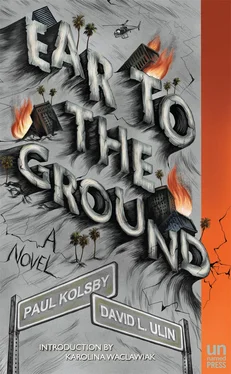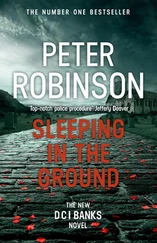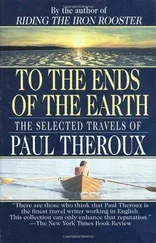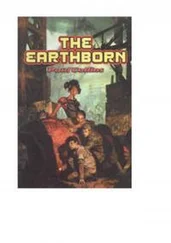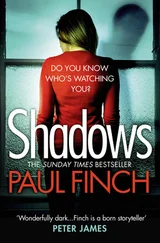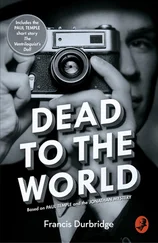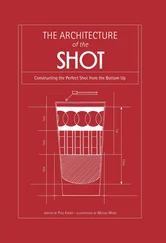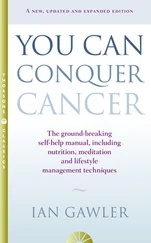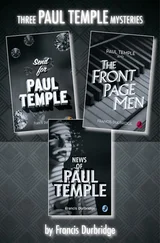“Yeah, an’ Bridge Bridges is my brother.”
“Hey!” Navaro called again.
Ian looked at him, blinked, and scurried into a trailer.
“Kid used to live in my building.” Navaro turned and walked away. “I hope he chokes on his vomit.”
Navaro didn’t remember getting onto the 101, nor could he recall the fifteen-minute drive north to the 405 interchange. He’d made the trip before, and there was no mystery in it. Besides, he’d been rebuffed by this kid, Ian, and in his current state of mind that didn’t help things. He’d misjudged the little sonuvabitch. He should have been nicer, but how the hell could he have known? “The kid scratches his belly all day and ends up a millionaire,” he said aloud. Then he cut off a Toyota Corolla.
Navaro’s reverie was interrupted when he reached the 405 and found it closed. He was irked further to see other drivers continuing north on the 101, forewarned by huge flashing arrows and detour markers to use an alternate route. Lost in thought, Navaro alone had not seen the signs.
He stopped his car, got out, and walked to a barrier where several dozen onlookers had assembled. From their conversation, he discerned that a movie was being shot, a truck was about to be blown up, and Bridge Bridges was on his way.
Suddenly, as the crowd watched, a helicopter began its descent. Wind from its propellers ripped through everyone’s hair, and some people covered their faces with their arms. The helicopter landed, and even Navaro joined in the applause when Bridge Bridges emerged. Behind the actor were Henny Rarlin and, still talking on his cellular phone, Ian Marcus. Navaro rubbed his eyes.
Just an hour ago, moments before he’d seen Navaro on Hollywood Boulevard, Ian had been approached by an officious looking man in a Dragnet suit who’d handed him a summons. When he saw the words “Theft of Intellectual Property,” Ian understood that Jon Kravitz, his erstwhile friend and collaborator, was suing him. Reading further, he found that unless he properly compensated this Jon Kravitz, Ear to the Ground could be enjoined. Bob Semel had called him immediately, and so had Michael Lipman — from his new corner office at ICM. Nothing yet from Ethan. Dr. Ehrich Weiss had come to his trailer wondering if he wanted to talk. Even Grace had been almost sweet to him. His lawyer was on his way to the set. Things were bad, and Ian was scared. There would be depositions taken. Depositions!
His father would fly out. Or he would go home and lie in bed for a week. Maybe Grace would take him back. Maybe she’d be surprised by the change in him. Through such a humbling experience, he’d learn integrity, and that’s not such a bad thing.
Henny Rarlin grabbed Ian’s arm. “We need a line for when the truck is going down and they’re about to die.”
“But I thought …”
“Yeah, but now we need a line .”
Ian thought a moment.
“What do you think about ‘fuck?’”
“Fuck? Why ‘fuck?’”
“Homage to Butch Cassidy. Ironic because we one-up them language-wise, and then switch the result. Cassidy and Sundance live. These guys don’t.”
Henny Rarlin walked away from him. “Fuck you ,” he said. “I’ll do it myself.”
CHARLIE RICHTER WAS RUNNING OUT OF TIME. WITH THE earthquake only five weeks away, he began dreaming of crumbling cityscapes, of concrete walls and freeway overpasses reduced to dust. He sat rigidly at his desk, working for hours without moving. And around his shoulders, near the top of his spine, he developed a terrible knot.
Twice last week, he had tried to explain the concept of retroshocks to Caruthers, but both times he’d been dismissed by the man’s jokes. “What are you blowing up next?” his boss asked him. “Anything good ?”
Caruthers’s reaction galled him because the retroshock idea was simple: Aim one force directly at another force of equal size and the two forces will be neutralized. What wasn’t so simple was the question of magnitude, 8.9. About five thousand times the size of the Oklahoma City blast.
It wasn’t long, however, before Charlie had a realization that was startling in its completeness, overwhelming in its immediate practical value. Like most great discoveries, it didn’t come about by calculation, but rather by calculation’s opposite.
Charlie was meditating, lying on his back with his knees slightly raised. He closed his eyes, and what he found behind his lids was not darkness at all, but an entirely different kind of light. When he stretched out his arms, he had the sensation of leaving his body and looking down from above. He was seized by an image, remembered from a snapshot, of his mother holding him as a baby, and unconsciously he curled into the fetal position. He felt confined, and a great pressure built up in his ears. Then the pressure ceased, and Charlie felt suddenly pure — pure, and clean, and newly born.
He got up and went to his desk, thinking about birth. Birth. Birth. Birth. Slowly, he began to smile.
Earthquakes worked in three stages, Charlie thought: beginning, middle, and end. It is the end we feel, the end that is tragic and destructive. In the end, the earth moves — after the offending energy, having been propelled across the planet, gathering steam under the surface, settles finally on its place of impact: the epicenter. At the beginning, however, there is a mere spark, whose damage comes only from what it can incite.
All along, Charlie had understood the way one temblor presaged another, fields of energy rippling back and forth across the Pacific plate like dominoes in a chain. He had used this information to predict the coming San Andreas quake, and to locate and project the epicenter at position D-55. Now the expression “Nip it in the bud” suggested itself to him.
He returned to his work table and began to manipulate data: magnitudes, longitudes and latitudes, dates and times and distance and miles. Via modem, he imported more data from the CES network, to pinpoint the exact time and place tectonic energy would begin to roll eastward toward Los Angeles. He looked at release histories and at projected points of origin from the San Francisco earthquake of 1906. Ditto Tokyo, 1923; Long Beach, 1933; and Anchorage, 1964. He pulled figures from Loma Prieta, Northridge, and Kobe, and soon he was swimming in his familiar sea of numbers. As the sun started to rise over the Los Angeles basin, he found a point near the island of Lui, an uninhabited member of the Hawaiian chain.
Charlie heard the slap of the Los Angeles Times against his front door. Outside, morning dew had become mist, and birds chirped more sweetly than usual. There was something lovely in their singing, some quality of hope Charlie had never before noticed. For the first time in a long time, he could see past December 29.
Charlie reached into his box to retrieve yesterday’s mail. Among the bills and direct mail solicitations, he found a padded envelope embossed with the White House seal. Curiously, he tore it open and pulled out three Grateful Dead concert tapes and a short, handwritten note on presidential stationery.
Back inside, Charlie unfolded the newspaper and realized it was Thanksgiving. He slipped one of the Dead bootlegs into his tape deck, then pulled a chair in front of the television. After finding the Macy’s parade, he turned the sound off. It had been a long time since he’d watched all those huge helium balloons float down Central Park West, but this morning his heart soared at the sight of them, drifting toward him above the latticework of Jerry Garcia’s guitar.
He turned up the volume on the stereo and scrunched down into his seat. “Thank you,” he said to no one in particular, eyes fixed on the screen.
Читать дальше
